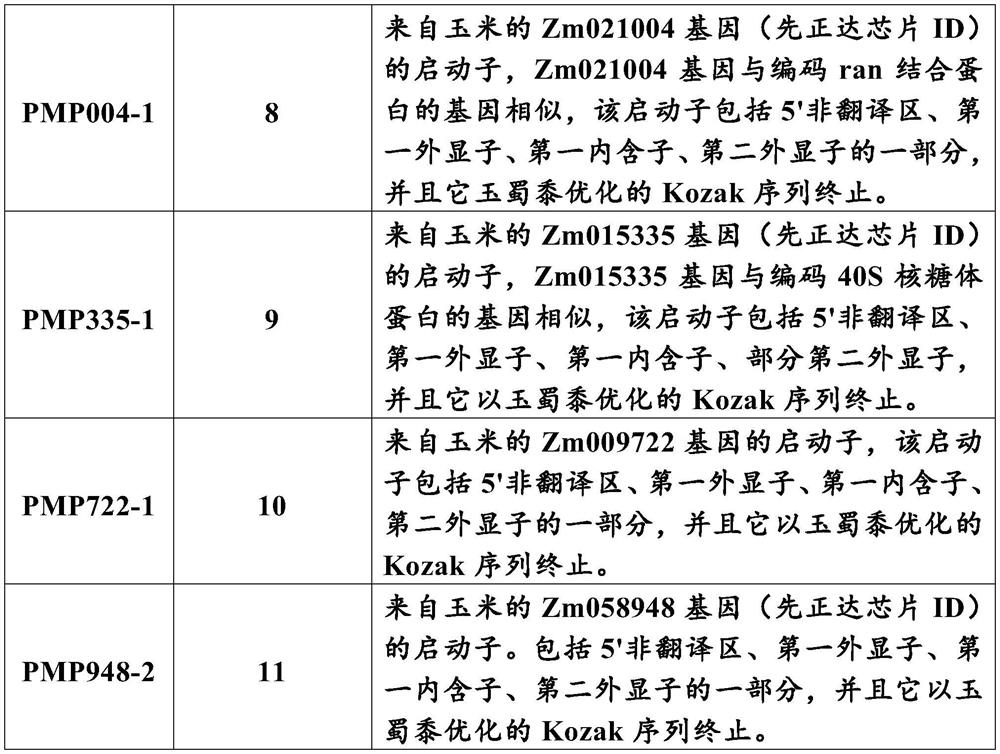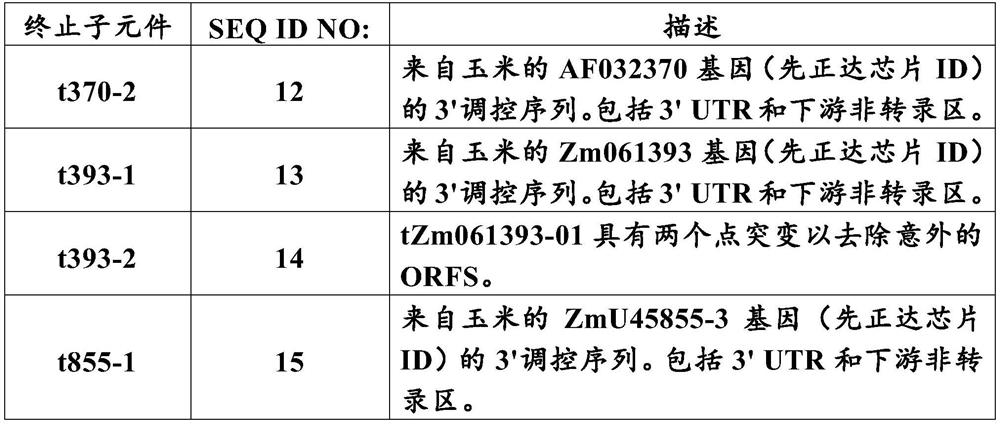Promoters for regulating gene expression in plants
A promoter and plant technology, which can be applied in the fields of plant genetic improvement, plant products, genetic engineering, etc., and can solve problems such as the adverse effects of non-pest insects and the adverse effects of transgenic plants on male fertility
- Summary
- Abstract
- Description
- Claims
- Application Information
AI Technical Summary
Problems solved by technology
Method used
Image
Examples
example
[0174] The present invention may be further described by reference to the following specific examples. These examples are provided for illustrative purposes only and are not intended to be limiting unless otherwise stated. Standard recombinant DNA and molecular cloning techniques used herein are well known in the art and described in: Ausubel (editor), Current Protocols in Molecular Biology, John Wiley and Sons, Inc. [John Wiley & Sons] (1994); J. Sambrook et al., Molecular Cloning: A Laboratory Manual, 3rd ed., Cold Spring Harbor, NY: Cold Spring Harbor Laboratory Press [冷泉港, New York: Cold Spring Harbor Laboratory Press] (2001); and T.J. Silhavy, M.L. Berman and L.W. Enquist, Experiments with Gene Fusions, Cold Spring Harbor Laboratory, Cold Spring Harbor, NY [Cold Spring Harbor Laboratory Press] , Cold Spring Harbor, New York (1984).
example 1
[0175] Example 1. Identification of maize regulatory elements.
[0176] Regulatory elements from maize genes were identified on Syngenta's proprietary (Zm80K) Affymetrix array, which were highly expressed in multiple tissue types but not expressed in pollen, i.e. very low or no expression in pollen detected. Regulatory elements from 8 different maize genes were used to generate constructs to drive the expression of insect control genes in transgenic maize tissues and plants. A description of the regulatory elements used is shown in Table 1.
[0177] Table 1. Description of the regulatory elements used to prepare the expression constructs.
[0178]
[0179]
[0180] A terminator element was also identified from the same gene from which the promoters identified above were cloned. See Table 2 for terminator descriptions.
[0181] Table 2. Description of terminator elements of the invention.
[0182]
[0183]
example 2
[0184] Example 2: Construction of non-pollen expression vector
[0185] To test the above-mentioned regulatory elements (promoter and terminator) in transgenic maize plants, 8 binary vectors were prepared. Each binary vector contains two expression cassettes.
[0186] The first expression cassette comprises an eFMV / e35S transcriptional enhancer operably linked to the promoter of the invention to be tested, which is linked to a heterologous coding sequence (cry1Ab) encoding the Cry1Ab insecticidal protein (cry1Ab) (US Pat. No. 5,625,136), the heterologous coding sequence is operably linked to the matching terminator sequence of the promoter. For example, an expression cassette prepared to test the prZm061393-01 promoter (SEQ ID NO: 2) contained the tZm061393-01 terminator (SEQ ID NO: 13).
[0187] The second expression cassette, which is the same for each binary vector, contains the maize ubiquitin promoter (prUbi1-10) (Christensen et al., 1992 PMB 18:675), which is associate...
PUM
 Login to View More
Login to View More Abstract
Description
Claims
Application Information
 Login to View More
Login to View More - R&D
- Intellectual Property
- Life Sciences
- Materials
- Tech Scout
- Unparalleled Data Quality
- Higher Quality Content
- 60% Fewer Hallucinations
Browse by: Latest US Patents, China's latest patents, Technical Efficacy Thesaurus, Application Domain, Technology Topic, Popular Technical Reports.
© 2025 PatSnap. All rights reserved.Legal|Privacy policy|Modern Slavery Act Transparency Statement|Sitemap|About US| Contact US: help@patsnap.com



